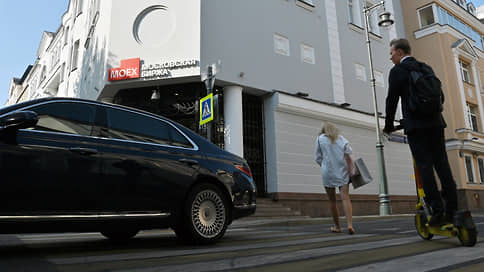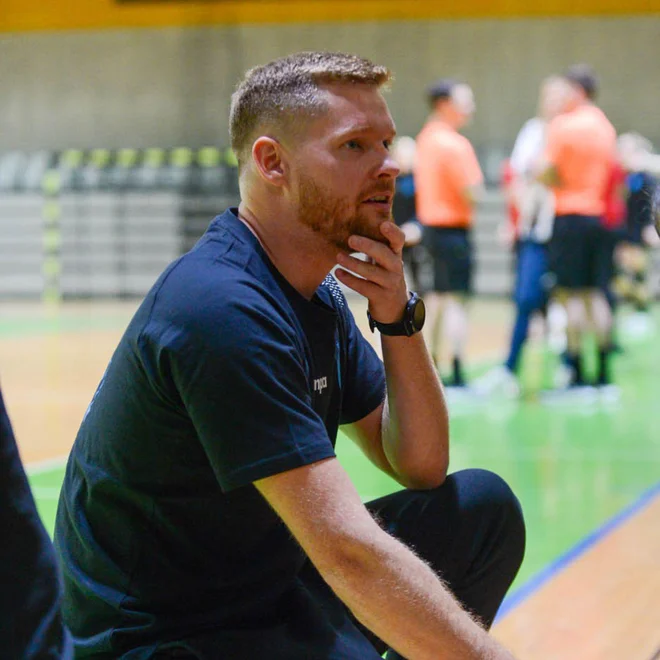Former nuisance people can pick up their lives in the ‘Skaeve Huse’ in the stimulus surroundings in Utrecht
/s3/static.nrc.nl/images/gn4/stripped/data129909294-ffefc8.jpg|https://images.nrc.nl/3EOp3iSQdNx8KS7thTuIj89bY6c=/1920x/filters:no_upscale()/s3/static.nrc.nl/images/gn4/stripped/data129909294-ffefc8.jpg|https://images.nrc.nl/uK8c90zicSJdTrMfq9sAR3NYrkw=/5760x/filters:no_upscale()/s3/static.nrc.nl/images/gn4/stripped/data129909294-ffefc8.jpg)
In the Leidsche Rijn district of Utrecht, between the construction cranes and rising homes, there has been a small and striking residential project for seven years: Skaeve Huse. People who have caused so much nuisance caused by addictions or other complex problems are on a closed area with seven container houses that regular care or housing is no longer possible. For them the choice is simple: live here or live on the street.
Although the Skaeve Huse (Danish for ‘Scheve Huizen’) have been nicknamed ‘ASO homes’ over the years, there is peace. The only sound comes from the piles of the construction site further down.
Each container home has a small garden that some residents have fully built up with their ‘pearls’. Unit manager Ingrid Verkerk explains: “Many residents are collectors, or even Hoarderswho find it difficult to put things away. One resident rents an extra storage space, another lived together with forty cats before moving to Skaeve Huse. ”
In this stimulus environment, residents can live their lives without nuisance for local residents.
Eerdmans
Skaeve Huse offer shelter to people who were repeatedly taken out of the house, stayed in institutions for a long time or lived on the street. « They are unsuitable for group living, » says Verkerk. The shelter is intended for people who are not « crazy enough for the clinic, but also not punishable enough for the prison », as MP Joost Eerdmans (Ja21) expresses it to it NRC.
The Skaeve Huse is now part of the political debate on ‘confused people’ in The Hague. As an alderman of Leefbaar Rotterdam, Eerdmans already argued in 2017 for the expansion of the concept, because he sees it as a solution for the people who show misunderstood behavior and cause nuisance. Now he as a member of the House of Representatives as a member of the Member of the House of Representatives.
The number of incidents with confused persons is increasing. In 2024, the police registered 149,827 incidents with people with confused behavior – an increase of 6 percent compared to 2023. During a debate in the Lower House in February, following a one Deadly stab incident in Nieuwegeinboth left and right -wing MPs emphasized the importance of a structural solution. SP MP Jimmy Dijk stated: « Years of spending cuts on housing, GGZ and the police have exacerbated this problem. When will the cabinet invest in clinics, mental health care and police? »
They can use alcohol and drugs here and largely organize their lives themselves. This is not a transfer location
The policy for people with confused behavior has changed considerably in recent decades. Where they used to be included in psychiatric institutions for a long time, the focus shifted with the Social Support Act in 2007 to participation and independent living. Ambulatory care became the norm and people with psychological vulnerabilities had to participate in society as much as possible. This led to some people who were unable to ground in regular residential areas, fell between two stools. In that sense, Skaeve Huse is a counter -movement: a recognition that a small group cannot live independently.
The aim of Skaeve Huse is not to have residents return to society, such as with many other reception initiatives. « Our residents have been treated, » says Verkerk. « They can use alcohol and drugs here and largely organize their lives themselves. This is not a transfer place. The idea is that people will eventually die here. »
That position differs from the ambition of Eerdmans, who wants residents to find their place in society again. « But in practice that hardly works, » the politician acknowledges.
Read also
All emergency signals about confused people are quite complicated, say healthcare providers
Signals
There is an informal atmosphere on the site. There are cameras, but the gate is open. Jeroen (43, does not want to be surname in the newspaper), one of the first residents, studied for social worker and worked with young people. Until he ended up in a psychosis fifteen years ago and lost his home. « That starts with pulling me back, getting in isolation, avoid contact, » he says. « But here that happens less quickly. There is always someone present. »
Daily guidance plays a crucial role. Supervisor Wim Aantjes: « Sometimes residents do not immediately say what is wrong, but they come to our office six times a day. Those are signals. »
Small adjustments can make a big difference. « With a resident a kitchen cupboard was broken. At first I thought: wait a few days. But he became so restless that he went to drink and caused nuisance. When I repaired the cupboard, the peace returned immediately. »
For Jeroen, the Skaeve Huse offers stability: « Because I find my peace here and have a roof over my head, I use fewer drugs. »
Stigma
Despite the proven value of the project, the future of Skaeve Huse in Leidsche Rijn is uncertain. In 2029 the houses must make way for a park in a new residential area and the search for another location is difficult. « The municipality is willing to grant a subsidy, but the stigma is the biggest problem, » says Verkerk. « Many locations are rejected because local residents are against it. »
That stigma is palpable. « When a secondary school was built next to this, some parents decided not to send their children there because of us. Incomprehensible, » says Aantjes. Jeroen: « When I walk, they sometimes say » cage terror « to me. » With which they should refer to that confused people should be in a closed establishment.
Yet local residents do not necessarily experience the presence of Skaeve Huse as negative. A woman (31) who lives nearby says: « Sometimes someone puts up hard music in the middle of the night, but they are incidents, really not every evening. »
The problem is growing, but the solution is not
Skaeve Huse Leidsche Rijn is not the only project that finds a new location difficult. It has been searched in Haarlem since 2018. « The biggest problem is that the local residents are against it, » says Wendy Dieben, process manager of Skaeve Huse Haarlem. Het verzet is afgenomen nadat een aantal tegenstanders een bezoek heeft gebracht aan de Skaeve Huse in Hilversum. That helped them to better understand the plan for Haarlem.
A location has since been found and the permit application is being prepared. The construction of the Skaeve Huse in Haarlem is expected to start next fall.
/s3/static.nrc.nl/images/gn4/stripped/data129909333-ac312b.jpg|https://images.nrc.nl/MPLwWyTLOGgoo94VgM3psdveIrY=/1920x/filters:no_upscale()/s3/static.nrc.nl/images/gn4/stripped/data129909333-ac312b.jpg|https://images.nrc.nl/c-3S2Zl9wbVXUxBFer_4-UU9ufs=/5760x/filters:no_upscale()/s3/static.nrc.nl/images/gn4/stripped/data129909333-ac312b.jpg) Jeroen with coordinator Wim Aantjes: « When a school was built here, some parents decided not to send their children there because of us. Incomprehensible, »
Jeroen with coordinator Wim Aantjes: « When a school was built here, some parents decided not to send their children there because of us. Incomprehensible, »Homelessness
Eerdmans emphasizes the need for expansion: « Skaeve Huse is a good initiative, but a drop on the glowing plate. The problem is growing, but the solution does not. » In January 2024, together with Mirjam Bikker (ChristenUnie), he submitted a motion to shape Skaeve Huse as a national program. They also argued for extra subsidies, since often insufficient money is available to accommodate vulnerable people. In addition, they strive to support municipalities in obtaining permits and involving local residents.
Although the motion was adopted, few concrete steps were taken for the time being. In June 2024, former State Secretary Maarten van Ooijen (ChristenUnie) announced the House of Representatives that the financial resources were missing to expand Skaeve Huse nationally. He referred to existing funds, such as the annual 55 million euros from the National Action Plan for Hoofloosheid, which municipalities can use for alternative forms of housing. A spokesperson for the Ministry of Health also indicated that a publication of ‘practical examples’ follows in the autumn to support municipalities in their Skaeve Huse projects.
In the meantime, the future of the Skaeve Huse residents in Leidsche Rijn remains uncertain. « What happens to us if this place disappears? » Jeroen wonders.
Read also
In Utrecht, ex-dauts can go to nine new homes

:format(webp)/s3/static.nrc.nl/images/gn4/stripped/data127660326-9c83c7.jpg)
:format(webp)/s3/static.nrc.nl/images/gn4/stripped/data125124134-406d82.jpg)
/s3/static.nrc.nl/images/gn4/data133317775-d0126f.jpg)
:format(webp)/s3/static.nrc.nl/bvhw/wp-content/blogs.dir/114/files/2021/11/trujilo-vierkant.png)
/s3/static.nrc.nl/images/gn4/stripped/data133311162-89da16.jpg|https://images.nrc.nl/0GhfYXflp44vL8qLyvwS0lBuz-I=/1920x/filters:no_upscale()/s3/static.nrc.nl/images/gn4/stripped/data133311162-89da16.jpg|https://images.nrc.nl/eiTEPfNVErZvLkKwpzeS_a75FXk=/5760x/filters:no_upscale()/s3/static.nrc.nl/images/gn4/stripped/data133311162-89da16.jpg)




